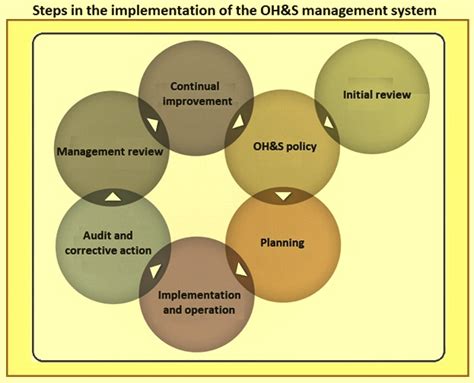The implementation and outcomes of Occupational Health and Safety (OHS) measures are crucial for maintaining a safe and healthy work environment. Effective OHS practices not only protect workers from injuries and illnesses but also have a positive impact on the overall productivity and efficiency of an organization. In this article, we will delve into the various outcomes of OHS, exploring both the benefits and challenges associated with its implementation.
Key Points
- Reduced workplace injuries and illnesses through effective hazard identification and risk management
- Improved employee well-being and job satisfaction, leading to increased productivity and reduced absenteeism
- Enhanced organizational reputation and compliance with regulatory requirements, reducing legal liabilities
- Cost savings through reduced workers' compensation claims and medical expenses
- Increased employee engagement and participation in OHS initiatives, fostering a culture of safety
Benefits of OHS Implementation

One of the primary outcomes of OHS implementation is the reduction of workplace injuries and illnesses. By identifying and managing hazards effectively, organizations can minimize the risk of accidents and ensure a safer working environment for their employees. This, in turn, leads to improved employee well-being and job satisfaction, as workers feel valued and protected by their employer. According to the International Labor Organization (ILO), every year, approximately 2.3 million workers die from occupational injuries and illnesses, and an estimated 340 million occupational accidents occur. Effective OHS practices can significantly reduce these numbers.
Improved Productivity and Efficiency
Improved employee well-being and job satisfaction have a direct impact on productivity and efficiency. When workers feel safe and supported, they are more likely to be engaged and motivated, leading to increased productivity and better work quality. A study by the World Health Organization (WHO) found that for every dollar invested in OHS, the return on investment can be as high as 2.2 dollars. This highlights the economic benefits of investing in OHS, as reduced absenteeism, turnover, and workers’ compensation claims can result in significant cost savings.
| Benefit | Description | Estimated Cost Savings |
|---|---|---|
| Reduced Absenteeism | Improved employee well-being and job satisfaction lead to reduced absenteeism | 5-10% reduction in absenteeism-related costs |
| Decreased Turnover | Increased job satisfaction and engagement lead to reduced employee turnover | 10-20% reduction in recruitment and training costs |
| Lower Workers' Compensation Claims | Effective hazard identification and risk management reduce workplace injuries and illnesses | 15-30% reduction in workers' compensation claims |

Challenges and Limitations of OHS Implementation

Despite the numerous benefits of OHS implementation, there are also challenges and limitations that organizations must address. One of the primary challenges is the initial investment required to establish an effective OHS system. This can include costs associated with training, equipment, and personnel, which may be a barrier for small and medium-sized enterprises (SMEs). Additionally, the complexity of OHS regulations and standards can be overwhelming, particularly for organizations operating in multiple jurisdictions.
Addressing Cultural and Linguistic Barriers
Cultural and linguistic barriers can also pose a significant challenge to OHS implementation. In workplaces with diverse workforces, language barriers can hinder communication and training, while cultural differences can influence attitudes towards safety and risk management. Organizations must take a proactive approach to addressing these barriers, providing training and resources in multiple languages and formats, and fostering an inclusive safety culture that values diversity and promotes participation.
What are the key elements of an effective OHS system?
+An effective OHS system includes hazard identification and risk management, training and education, incident reporting and investigation, and continuous monitoring and evaluation.
How can organizations measure the effectiveness of their OHS measures?
+Organizations can measure the effectiveness of their OHS measures by tracking key performance indicators (KPIs) such as injury and illness rates, workers' compensation claims, and employee satisfaction surveys.
What role do employees play in OHS implementation?
+Employees play a critical role in OHS implementation, as they are often the first line of defense against workplace hazards. Employees should be encouraged to report hazards, participate in training and education, and contribute to the development of OHS policies and procedures.
In conclusion, the outcomes of OHS implementation are multifaceted and far-reaching, with benefits ranging from reduced workplace injuries and illnesses to improved productivity and efficiency. While there are challenges and limitations to OHS implementation, organizations can overcome these by investing in effective OHS measures, addressing cultural and linguistic barriers, and fostering a culture of safety that values diversity and promotes participation. By prioritizing OHS, organizations can protect their most valuable asset – their employees – and reap the rewards of a safer, healthier, and more productive work environment.
